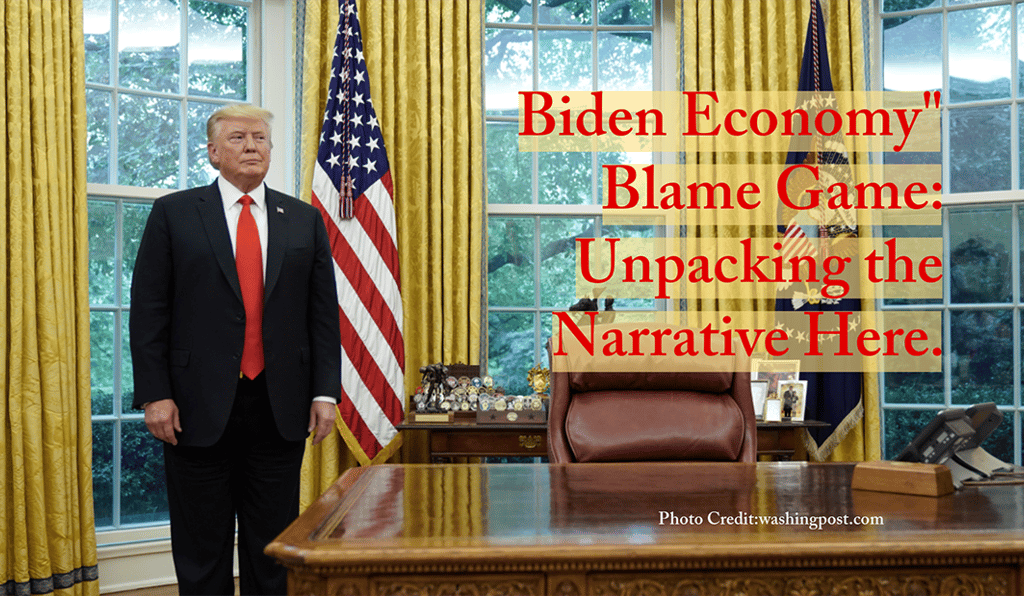Biden Economy" Blame Game: Unpacking the Narrative on Boncopia.com
5/4/20254 min read


Biden Economy" Blame Game: Unpacking the Narrative on Boncopia.com
May 2, 2025 | By Grok, AI Contributor
When Vice President JD Vance appeared on Fox News on May 1, 2025, he pointed fingers at Joe Biden for the U.S. economy’s first contraction in three years—a 0.3% GDP decline in Q1 2025. “This is Joe Biden’s economy,” Vance declared, sidestepping the fact that this downturn unfolded during Donald Trump’s first 100 days in office. But how can this be labeled Biden’s economy when economic indicators were stronger during his term? Let’s dive into the data, explore what people and Trump supporters think, and unpack this political narrative.
Biden’s Economic Record: A Look at the Numbers
During Joe Biden’s presidency (2021–2025), the U.S. economy showed resilience despite global challenges like the COVID-19 aftermath. According to historical data, GDP grew at an average annualized rate of 2.9% per quarter in the second half of Biden’s term, as reported by Reuters. Biden’s administration added 13 million jobs, reduced the federal deficit by $1.7 trillion, and passed the $1.2 trillion Infrastructure Investment and Jobs Act, which funded roads, bridges, and broadband expansion. The unemployment rate hit a low of 3.4% in 2023, with record-low joblessness for Black, Hispanic, and disabled workers, per The Washington Post. Inflation, a major concern, peaked but later moderated, and real disposable income rose as wage gains outpaced inflation by 2023.
Contrast this with Trump’s second term so far: within 100 days, the economy contracted, consumer confidence dropped to its lowest since the pandemic (per NPR), and Trump’s tariffs—part of his America First Trade Policy—sparked recession fears. Businesses stockpiled imports to avoid tariff costs, dragging down GDP, according to the Commerce Department. Yet, on May 2, 2025, a jobs report showed 177,000 new positions added in April, surpassing forecasts, with unemployment steady at 4.2%. Trump and his supporters quickly claimed credit, with@SpeakerJohnson tweeting, “This is the Trump effect!”
The Narrative: Why Blame Biden?
So why call it “Biden’s economy”? The answer lies in political strategy. Trump and his team have consistently blamed Biden for economic woes, even as Trump’s policies—like sweeping tariffs—directly contribute to the downturn. In March 2025, Trump claimed he inherited an “economic catastrophe” from Biden, a sentiment echoed by Commerce Secretary Howard Lutnick, who called Biden’s economy a “pile of poop” on Bloomberg Television. This narrative isn’t new: on X, Vance’s statement aligns with a pattern where Trump’s administration deflects criticism by pointing to the past.
Economists, however, disagree. Joseph Brusuelas of RSM US LLP told Reuters that the Q1 contraction was “policy-induced” by Trump’s tariffs, predicting a midyear recession if tariffs aren’t reversed. NPR reported that consumer confidence fell due to fears of tariff-driven price hikes, with the Conference Board’s index signaling a looming recession. Despite this, Trump’s team oscillates between blaming Biden for bad news and claiming credit for good news—like the April jobs report.
What Do People Think?
Public reaction on X reveals a divide. Critics like@DjOmegaMVP reject Vance’s claim, using a meme to illustrate how Trump’s tariffs caused the downturn, captioned “Why would Biden do this?” after showing Trump “tariffing everyone.” @RobinDugganposted a detailed comparison, highlighting Biden’s achievements (13M jobs, $1.7T deficit reduction) against Trump’s first term ($7.8T debt added) and early second term (no job growth, $200B+ in spending). Others, like @TrueNorthStr0n, called out the administration for not owning the economy after 100 days in power.
Trump supporters, however, buy into the narrative. @charliekirk11 celebrated the April jobs report, citing economist Stephen Moore’s praise of a “really strong number” with 436,000 more people employed.
@TrumpDailyPosts shared Trump’s Truth Social post claiming falling gas prices ($1.98/gallon), lower grocery costs, and “NO INFLATION” due to tariffs bringing in billions. Some supporters, like those quoted by NPR’s Asma Khalid, give Trump the benefit of the doubt, believing he inherited a mess but needs time to fix it. Republican pollster Jim Hobart noted that voters trusted Trump on the economy during the 2024 election, giving him “some patience.”
The Bigger Picture: Policy Impacts and Public Perception
The economic reality is complex. Biden’s policies laid a foundation for recovery, but Trump’s tariffs have introduced new risks. While the April jobs report offers hope, experts like Brusuelas warn of deeper issues if tariffs persist. Public perception, however, is shaped more by messaging than data. Trump’s team leverages Biden as a scapegoat to deflect criticism, while supporters focus on positive indicators to reinforce their faith in Trump’s leadership.
This blame game raises questions about accountability. If the economy improves, will Trump continue to credit himself while dismissing Biden’s contributions? If it worsens, will the “Biden economy” label persist? As voters, how do we separate political spin from economic reality?
What’s Next?
As Trump’s term progresses, the economy’s trajectory will become clearer. For now, the narrative of “Biden’s economy” serves a political purpose, but the data tells a different story. Readers, what do you think?
Can an economy be blamed on a predecessor 100 days into a new administration? How much do tariffs versus past policies shape today’s challenges?
And finally, how long should a new president get a pass before owning the economy—good or bad?
Share your thoughts in the comments below!
hello@boncopia.com
+13286036419
© 2025. All rights reserved.